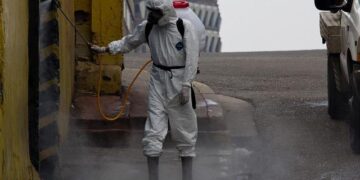Amid escalating tensions in the Middle East, global markets are closely monitoring the US dollar’s performance as the world awaits Iran’s response to a recent American military strike. The dollar has seen notable gains, reflecting investor caution and a flight to safety amid geopolitical uncertainty. This article examines the factors driving the dollar’s strength and the potential implications for international markets as stakeholders brace for Iran’s next move.
Dollar Strengthens Amid Rising Geopolitical Tensions Following US Strike in Iran
In response to escalating geopolitical risks, the US dollar has seen a notable uptick against major currencies. Investors are flocking to the greenback, often considered a safe-haven asset in times of international uncertainty. The recent US strike in Iran has amplified concerns over stability in the Middle East, prompting market participants to reassess their portfolios amid the potential for further conflict. Key global currencies such as the euro and yen experienced increased volatility as traders digested the implications of the attack and awaited Iran’s next move.
Market analysts point to several factors contributing to the dollar’s resurgence:
- Heightened demand for USD as a protective asset in volatile conditions.
- Speculation on Federal Reserve’s stance, given uncertain economic aftermath from geopolitical tensions.
- Reduced appetite for riskier assets, influencing currency flows away from emerging markets.
| Currency Pair | Movement (24h) | Current Rate |
|---|---|---|
| USD/EUR | +0.78% | 1.0923 |
| USD/JPY | +0.45% | 146.85 |
| USD/GBP | +0.62% | 1.2476 |
Market Analysts Weigh Potential Outcomes as Global Investors Monitor Tehran’s Next Move
Market experts are closely analyzing Tehran’s forthcoming decisions amidst the escalating tensions following the recent U.S. attack. Global investors have responded with increased caution, driving the dollar to notable gains as they hedge against potential instability. The international financial community remains divided on Tehran’s possible strategies, ranging from diplomatic engagement to decisive retaliatory actions, each carrying significant implications for regional security and economic stability. Analysts emphasize that the direction Iran chooses will heavily influence risk sentiment and capital flows over the coming weeks.
Key factors under scrutiny include:
- Tehran’s diplomatic maneuvers within global forums
- Potential disruption to oil supply routes and energy markets
- Impact of sanctions and retaliatory economic measures
- Shifts in investor appetite towards safe-haven assets
| Scenario | Potential Market Impact | Investor Sentiment |
|---|---|---|
| De-escalation through diplomacy | Stabilization, easing volatility | Positive, risk-on |
| Military retaliation | Heightened risk, oil price surge | Negative, flight to safety |
| Prolonged stalemate | Market uncertainty persists | Mixed, cautious trading |
Strategic Recommendations for Traders Navigating Volatility in Currency and Energy Markets
In periods marked by heightened geopolitical tensions, such as recent events surrounding Iran and the US, currency and energy markets often experience sharp volatility. Traders are advised to prioritize liquidity and flexibility by focusing on highly-traded currency pairs and energy commodities that offer reliable price discovery. Utilizing stop-loss orders and setting well-defined risk boundaries can help manage sudden price swings triggered by unpredictable news flows. Moreover, keeping a close eye on market sentiment and geopolitical updates allows traders to anticipate potential market reactions and adjust their positions accordingly.
Energy traders should consider a diversified approach, balancing exposure between crude oil, natural gas, and alternative energy indexes to mitigate risks associated with supply disruption fears. A fundamental understanding of supply-demand imbalances combined with real-time technical analysis can identify entry and exit points more efficiently. Below is a simple risk management guideline for traders navigating this environment:
| Strategy | Recommended Action | Benefit |
|---|---|---|
| Hedging with Options | Purchase puts or calls on relevant assets | Limits downside risk |
| Position Sizing | Reduce exposure during peak volatility | Controls potential losses |
| Regular Monitoring | Track geopolitical news hourly | Improves reaction time |
Concluding Remarks
As tensions continue to simmer in the wake of the recent US strike, markets remain on edge, with the dollar gaining ground amid widespread uncertainty. Investors and analysts alike are closely monitoring Iran’s next move, which could significantly influence global economic and geopolitical landscapes. In the coming days, all eyes will be on Tehran as the world awaits a response that may reshape the dynamics of the region and test the resilience of international financial markets.





























